Wine Storage: Tips, Tricks, and Solutions

March 18, 2024
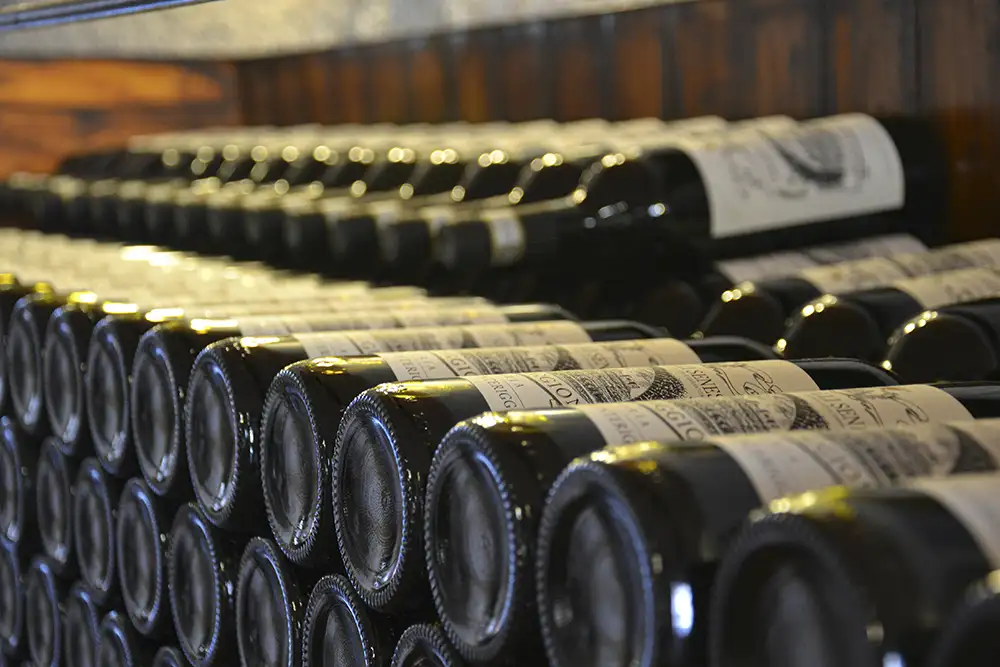
Proper wine storage is crucial for maintaining the quality and taste of every wine variety in your collection.
Whether you own a restaurant, run a taproom with a liquor license, or operate a bar, understanding the fundamentals of wine storage can enhance your customer experience and protect your investment.
In this guide, we'll explore the key aspects of wine storage, from temperature and humidity to the right storage equipment.
What We’ll Cover in This Piece:
Optimal Temperature Conditions for Wine Storage
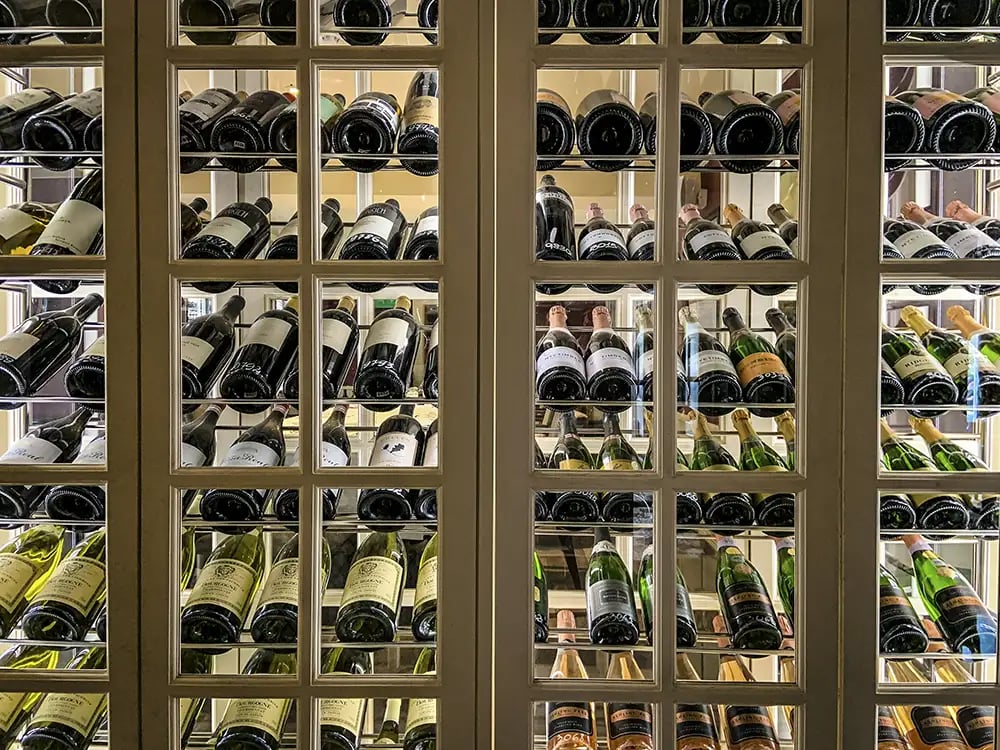
The temperature at which you store your wine plays a pivotal role in preserving its flavor, aroma, and overall quality.
Maintaining the ideal temperature conditions ensures that each bottle in your wine collection matures gracefully.
Here's a detailed look at the optimal temperature conditions for wine storage:
- General Temperature Range: The ideal temperature for wine storage falls within the range of 45 to 65 degrees Fahrenheit (7 to 18 degrees Celsius). This temperature range provides a balance that allows the wine to age gradually and develop complex flavors without the risk of premature aging or spoilage.
- Consistency is Key: Fluctuations in temperature can have a detrimental impact on the quality of your wine. Aim for a consistent storage environment, minimizing temperature variations. Sudden temperature swings can cause the wine to expand and contract, leading to seepage and oxidation.
- Red Wine vs. White Wine: Each wine variety should be stored differently. Red wines generally benefit from slightly higher storage temperatures, ideally between 50 and 65 degrees Fahrenheit (10 to 18 degrees Celsius). White wines, being more delicate, are best stored at slightly cooler temperatures, ranging from 45 to 55 degrees Fahrenheit (7 to 13 degrees Celsius).
- Avoid Extremes: Avoid extreme hot and cold temperatures.. Excessive heat can accelerate the aging process while freezing temperatures can cause the wine to expand and potentially damage the bottle. Maintain a well-insulated wine storage area to mitigate the impact of external temperature fluctuations.
- Invest in Temperature-Controlled Storage: Investing in a temperature-controlled wine cooler or cellar is highly recommended for those serious about wine preservation. These units provide a controlled environment, allowing you to set and maintain the desired temperature for your collection.
The Ideal Humidity for Wine Storage
Humidity is a critical factor in wine storage. Insufficient or excessive humidity can lead to various issues, impacting the cork, label, and overall quality of the wine.
Here’s how to maintain the proper humidity levels to preserve the integrity of your wine collection:
- Recommended Humidity Range: Aim for a humidity level between fifty percent and eighty percent for optimal wine storage conditions. This range prevents corks from drying out while maintaining a proper seal to stop oxidation and spoilage.
- Effects of Low Humidity: Low humidity levels can cause corks to dry out and shrink, increasing air penetration into the bottle. This heightened exposure to oxygen can result in premature aging and negatively impact the flavors and aromas of the wine. To combat low humidity, consider using a wine cellar humidifier to maintain adequate moisture in the storage environment.
- Effects of High Humidity: Excessive humidity can lead to mold growth on corks and labels, posing a threat to your collection's overall cleanliness and aesthetics.You must strike a balance and regularly monitor humidity levels to prevent any adverse effects. If needed, a dehumidifier can help regulate excessive moisture.
- Invest in a Hygrometer: To accurately monitor humidity levels in your wine storage area, invest in a quality hygrometer. This device will provide real-time readings, allowing you to adjust as needed to maintain the desired humidity range.
By paying attention to humidity levels, you create a proper wine storage environment that promotes the long-term health and quality of your bottles.
Remember, the delicate balance of temperature and humidity ensures that each bottle ages gracefully, preserving the unique characteristics of the wine for your future enjoyment or that of your customers.
Why Avoiding Light Exposure Is Key in Wine Storage
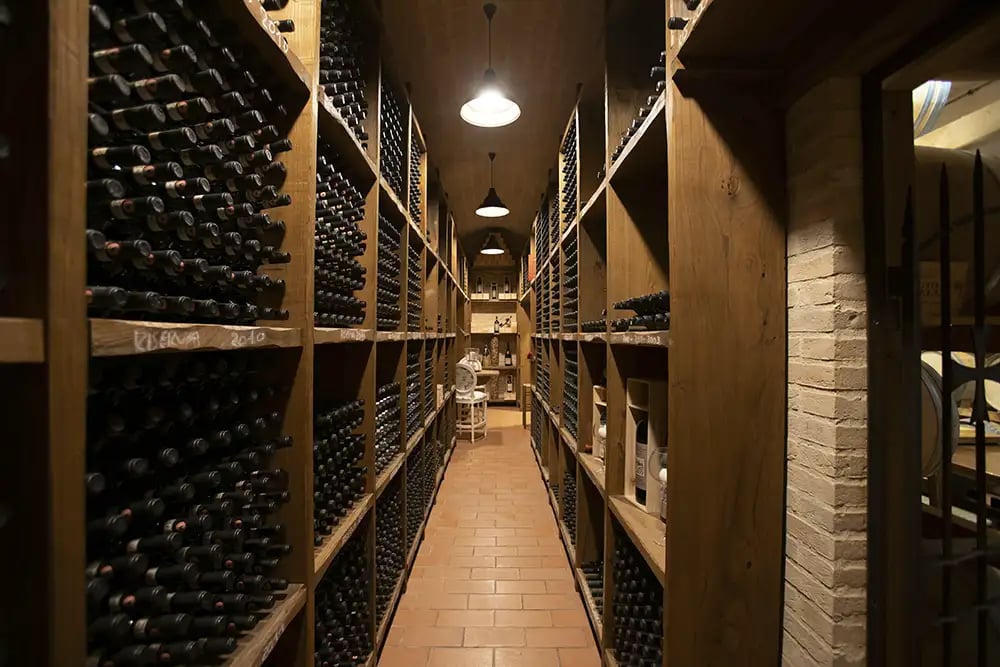
Light exposure is a significant concern when it comes to wine storage. Exposure to natural or artificial light, especially ultraviolet (UV) rays, can harm the quality and longevity of your wine. The interaction between light and wine leads to a chemical reaction known as light strike, resulting in the degradation of flavors and aromas.
Here are some key reasons why you should take steps to minimize light exposure in your wine storage area:
- Impact on Wine Chemistry: Ultraviolet rays present in sunlight can break down compounds in wine, developing unpleasant aromas and flavors. This is particularly true for white and sparkling wines, which are more sensitive to light than red wines.
- Storage Container Considerations: Clear or light-colored wine bottles offer minimal protection against UV rays. To combat this, consider using dark-colored bottles or storing wine in boxes, crates, or wine racks that shield the bottles from direct light exposure.
- Consistency in Storage: Maintaining a consistent environment is crucial for wine storage, and exposure to light can disrupt this stability. Shield your wine storage area from natural and artificial light sources to prevent temperature fluctuations and protect the integrity of your wine collection.
- Preserving Wine Quality: The aging process of wine is a delicate balance of chemical reactions. Light exposure can accelerate aging and lead to premature oxidation, resulting in a loss of freshness, color, and overall quality. Preserving the intended aging process is paramount for those investing in fine wines.
Store your wines in a dark or dimly lit area to safeguard them from light exposure. Consider investing in wine solutions incorporating UV-resistant materials or utilizing storage containers designed to minimize light penetration. This simple yet crucial step can significantly contribute to the longevity and enjoyment of your wine collection.
Wine Storage Solutions
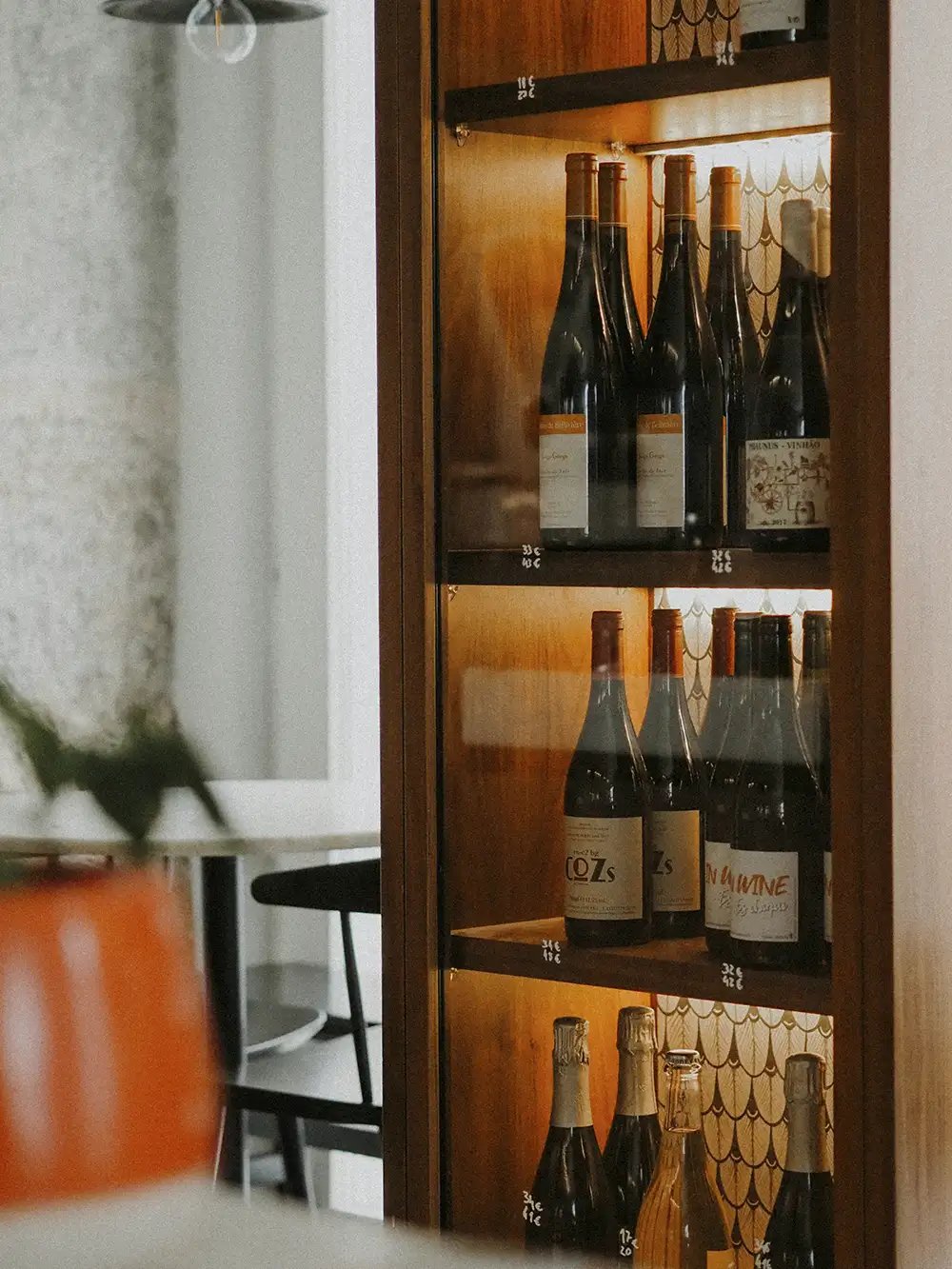
Various wine storage solutions, catering to different needs and preferences, will help you preserve the quality of your collection.
Let's explore some popular types of wine storage equipment:
- Wine Coolers: Wine coolers, also known as wine refrigerators, are compact and efficient units designed to store a limited number of bottles at a controlled temperature. They are perfect for small businesses or restaurants that want a dedicated space for their wine collection without needing a full cellar.
- Wine Cellars: For those with a more extensive collection, wine cellars provide a dedicated and controlled environment for aging wine. These can be built-in or freestanding units with advanced temperature and humidity controls.
- Wine Racks: Wine racks come in various styles and materials, offering flexibility in terms of capacity and aesthetics. Wall-mounted, tabletop, or modular wine racks are popular for residential and commercial use.
- Wine Cabinets: Wine cabinets combine storage functionality with a stylish design. They often include features such as glass doors, temperature control, and additional storage for accessories.
- Wine Dispensers: Ideal for establishments that offer wine by the glass, wine dispensers preserve the freshness of opened bottles while providing an attractive display.
When selecting wine storage equipment, consider factors such as the size of your collection, available space, and aesthetic preferences. Additionally, ensure that the chosen equipment provides the necessary temperature and humidity controls to maintain optimal wine storage conditions.
How to Organize a Wine Collection
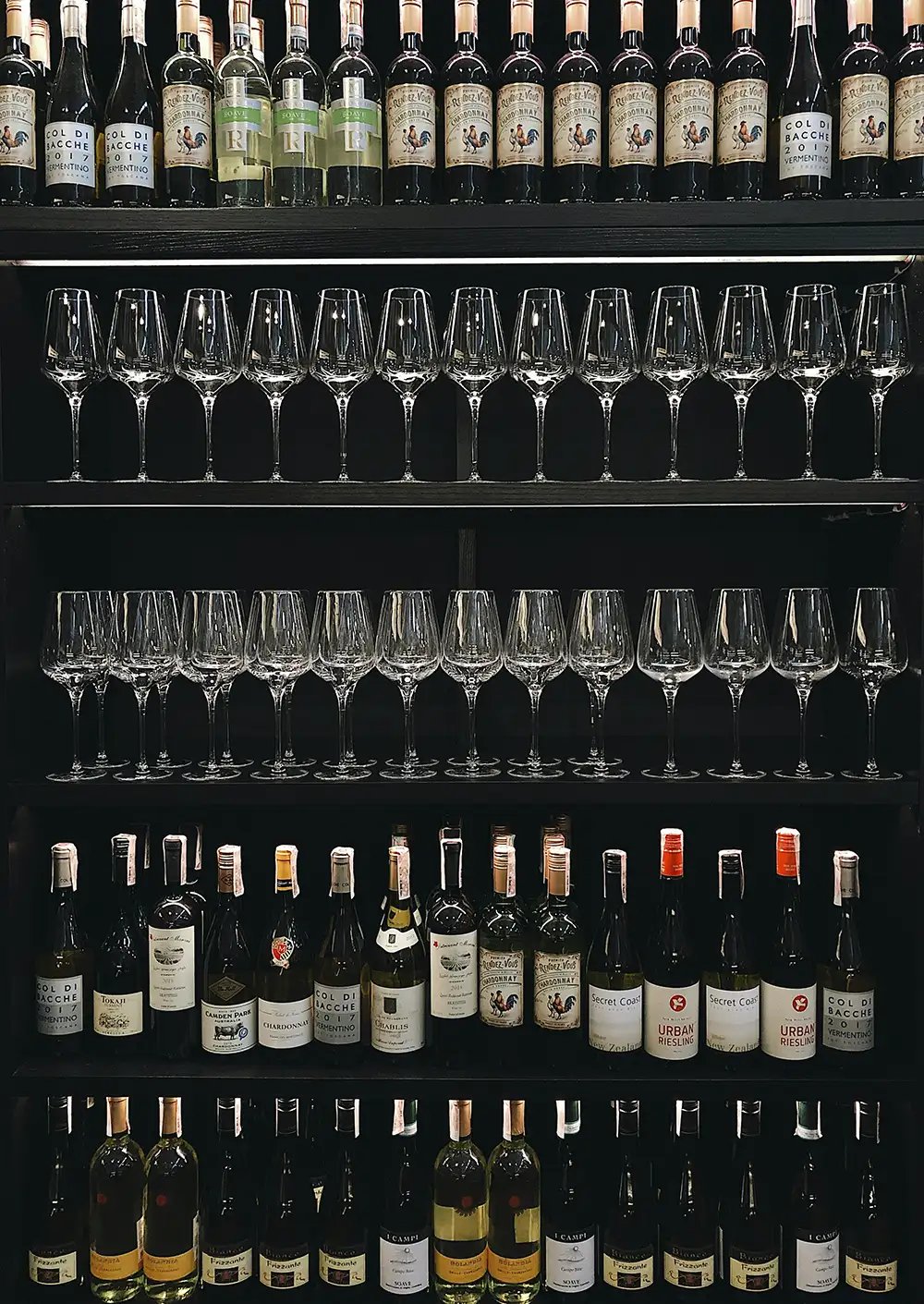
Whether you're a restaurant owner, bar manager, or a small business proprietor, a thoughtfully organized wine storage system enhances your space's visual appeal and streamlines inventory management.
Here are some best practices for organizing your wine collection:
- Categorize by Type: Group wines by type, separating reds, whites, and sparkling wines. Within each category, further organize by grape variety or region. Storing wine this way makes it easier to locate specific bottles.
- Arrange by Age: If your collection includes wines of varying ages, consider organizing them by vintage. This system allows for easy identification of wines approaching their peak maturity, aiding in strategic planning for consumption or resale.
- Implement a Labeling System: Use a consistent and clear labeling system for shelves, bins, or racks. Labeling by wine type, vintage, and other relevant details ensures that you and your staff can quickly identify and retrieve bottles without unnecessary searching.
- Temperature Zones: If your storage facility has multiple temperature zones, organize wines accordingly. Reds generally benefit from slightly higher temperatures than whites, so having separate zones can optimize the aging process for each type.
- Consider Accessibility: Place frequently accessed wines in easily reachable areas. Reserve more challenging-to-reach spaces for bottles that require extended aging or are part of a long-term investment strategy. This helps streamline daily operations and reduces the risk of damaging bottles during retrieval.
For a seamless organizational system, invest in wine storage solutions that provide flexibility, such as adjustable shelves or modular racks. Just like an efficient, easy-to-use brewery management system can improve operations at a brewery, a top-of-the-line wine inventory management software can improve your establishment’s operations, keeping track of each bottle's location, purchase date, and any additional details that may be relevant to your business.
By implementing these best practices, you not only enhance the functionality of your wine storage area but also contribute to your establishment's overall aesthetic appeal, showcasing your inventory with pride to customers or guests.
Ensuring Security and Accessibility for Your Wine Collection
Ensuring the security and accessibility of your wine collection is paramount, especially in a restaurant, bar, brewery, or small business setting. Implementing best practices in these areas safeguards your investment and streamlines daily operations.
Here are the critical considerations for maintaining the security and accessibility of your wine collection:
- Secure Wine Storage Area: Designate a secure and controlled wine storage area such as a locked cellar, a temperature-controlled room, or a dedicated storage space equipped with security features. Limit access to authorized personnel to prevent unauthorized handling or theft.
- Access Control: Implement access control measures, such as keycard entry systems or biometric scanners, to restrict entry to the wine storage area. Taking this step will enhance security, ensuring that only authorized individuals can access the collection. Regularly update access credentials to maintain control over who has permission.
- Surveillance Systems: Install surveillance cameras in and around the wine storage area to monitor activities and enhance security. Visible cameras can deter potential thieves, while recorded footage provides valuable evidence in the event of any security incidents.
- Inventory Management: Utilize an advanced inventory management system to keep track of your wine collection. This includes a detailed record of each bottle's location, purchase date, and current status. Regularly reconcile physical counts with your inventory records to identify any discrepancies promptly.
- Temperature and Humidity Monitoring: Implement real-time monitoring systems for temperature and humidity levels in your storage area. Sudden fluctuations can impact the quality of the wine, and early detection allows for immediate corrective action. Some systems even offer alerts for unauthorized access.
- Accessibility for Staff: While security is a priority, it's equally essential to ensure authorized staff can access the wine collection efficiently. Designate specific personnel responsible for managing the collection, and provide training on proper handling, retrieval, and storage procedures.
- Emergency Preparedness: To protect your wine even under challenging circumstances, develop a comprehensive emergency plan that includes procedures for power outages, equipment failures, or other unforeseen events.
Combining robust security measures with strategic accessibility creates a safe environment for your wine and allows for smooth and efficient operations. Prioritizing security not only protects your investment but also instills confidence in both staff and customers, contributing to the overall success of your business.
A Final Word on Wine Storage
By paying attention to temperature, humidity, and light exposure and choosing the right wine storage equipment, you can ensure your wine remains in optimal condition.
For restaurant, bar, and small business owners, this commitment to proper wine storage can enhance customer satisfaction and increase profitability.
Remember, a well-maintained wine collection reflects positively on your establishment and can set you apart from competitors. Stay informed, invest in quality wine storage solutions, and savor the rewards of a carefully curated wine selection.
Once you've created a proper wine storage area for your collection, take the next step by crafting an engaging and entertaining wine list visible both in your establishment and online. The essential menu-building platform for any restaurant, bar, or taproom, Untappd for Business connects to the world’s largest wine and spirits database, allowing you to rapidly design your menu with rich information to help guide your guests with their selection.
Note: This article was generated with the help of ChatGPT. It was edited, enhanced, and published by humans.
Manage Your Wine Menus Easily With Untappd For Business
Untappd For Business is the leading menu-building and publishing solution trusted by nearly 20,000 businesses across 75 countries.
With Untappd For Business, you can easily create and share your menu on digital signange and beautiful print menu templates.
Get started today by scheduling a free demo with our team!
